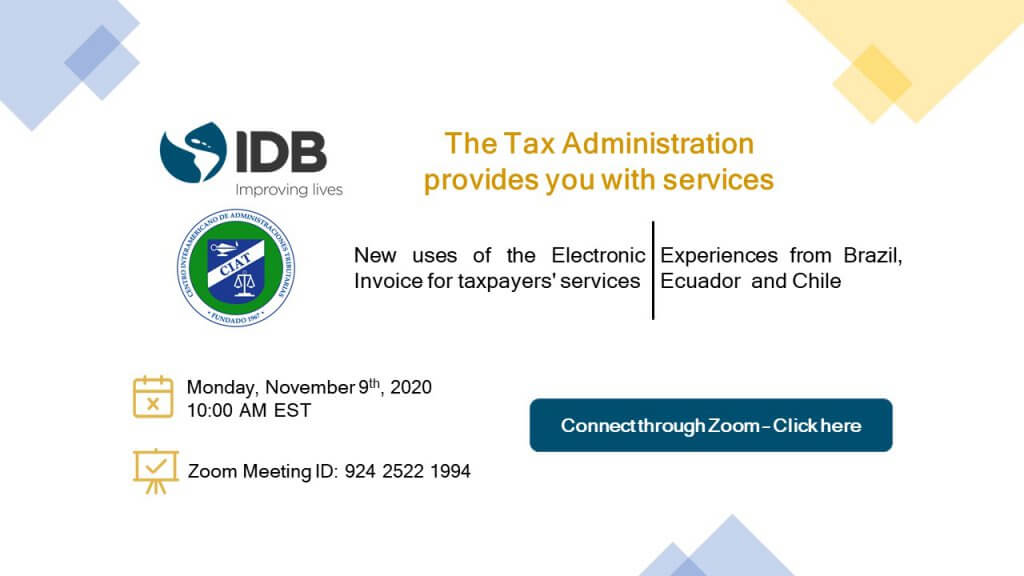And one more thing: other uses of electronic invoicing

At some point in the month of June we virtually met with some colleagues of the bank such as Alberto Barreix, Maria Cristina Mac Dowell, Andres Muñóz and Alejandro Rastelletti, to follow up on some of the issues on which the IDB and the CIAT collaborate. We then set out to give a joint view to one of our favorite topics, the electronic invoice. The Bank and the Centre have supported the development of national electronic invoicing systems. At CIAT, with the electronic invoicing network, whose first meeting in 2008, gave space to the regional exchange of experiences, good practices, and lessons learned. The Bank has supported with financing the development of national projects in Colombia and the Dominican Republic and is currently doing so in El Salvador, while, within the framework of PROFISCO, it supports several finance secretariats in Brazil to develop the potential generated by electronic tax documents. A couple of years ago, we jointly published “Electronic Invoicing in Latin America”.
In that dialogue, we came up with the idea of developing a couple of webinars. The first, last August 5, aimed at assessing recent developments in the framework of tax control. A webinar aimed at the tax administration officers who work with the electronic invoice for control purposes. In the same we had the privilege of moderating “four hands” the presentations by Juan Pablo de Botton, from SAT of Mexico, who told us of the infrastructure and use of tax vouchers to the audit; Erick Marinkovic, from SII of Chile, on the pre-filled VAT declaration; Catalina Garcia Curé, from DIAN of Colombia, on the detection processes of apocryphal invoices; Aubirlan Borges Vitoi, from the Ministry of Finance of the State of Goias, in Brazil, on the control of goods in transit; and, Gisella Arbiza, and Juan García, from the DGI of Uruguay, on the use of cubes for the audit of large taxpayers. The final words corresponded to Eudaldo Almeida, who as coordinator of ENCAT, led for years the process of development and expansion of electronic documents in Brazil.
The second webinar, and the reason for this post, has to do with the use of electronic invoicing for purposes other than control. The effort of tax administrations and taxpayers to develop these national systems in real time, or very close to real time, with an enormous wealth of information, can be beneficial to other areas, in addition to compliance itself and the improvement and simplification of processes in taxpayers. With the necessary precautions, and taking care of our responsibility to observe matters of fiscal secrecy, as well as the privacy of individuals, there are opportunities to improve some services to citizens and some public administration processes. This webinar, which will be open to the public, will cover these other uses of electronic invoicing, including:
We are confident that these experiences that come to us from Brazil, Chile and Ecuador will confirm to the webinar attendees, what Monica and Raul are convinced. Electronic invoicing in Latin America is much more than a good idea.
The webinar, which will take place on November 9 at 10 a.m. Panama – Washington DC time (15: 00 UTC) will feature simultaneous interpretation into Spanish, English, and Portuguese. Write it down in your calendar, register here and share the invitation. We are waiting for you.
Greetings and good luck.
2,585 total views, 2 views today


1 comment
Thanks for the article on And one more thing: other uses of electronic invoicing.Looking forward for more articles like this.